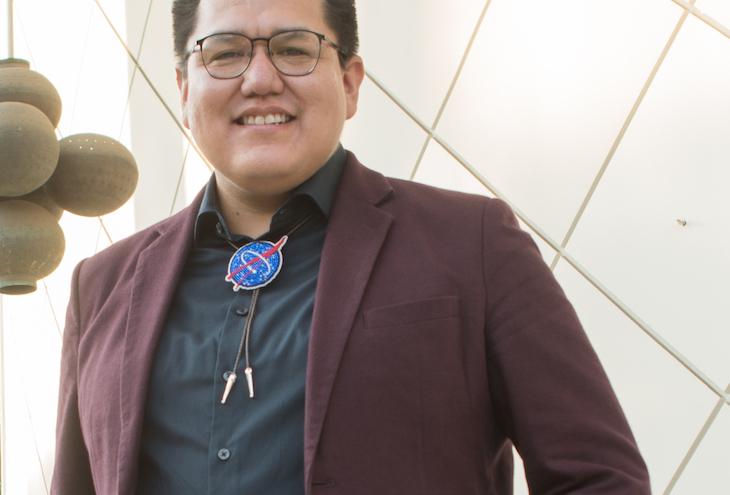Aaron Yazzie shares many of the questions a lot of us have about the planet Mars. “Mars was once similar to Earth,” he says. “It once had water and was warmer as an early planet. It developed over billions of years in similar ways to Earth, but the question is, why did Earth develop life and Mars didn’t? Or maybe it did?”
Like most of us, Yazzie likes to puzzle over these questions. But there’s a big difference in his ruminations — his work as an engineer at NASA’s Jet Propulsion Laboratory (JPL) in Pasadena, Calif., is instrumental in actually getting some answers. Yazzie, the winner of this year’s award for Technical Excellence, led a team that developed the Mars 2020 Sample Acquisition Drill Bit Assemblies, which are an integral part of the Sample Caching System aboard the Perseverance rover that landed on the red planet in February of this year.
In NASA parlance, that means Yazzie and his colleagues developed the tools and instruments needed to collect rock core samples that will eventually be returned to Earth and studied in depth. “Previously, when we studied Mars geology to look for water and signs of the building blocks of life, like carbon, we would drill into the rocks and study the powder using instruments on board the missions,” says Yazzie. “Now we are trying to acquire a preserved rock core to bring back to Earth to study with much more powerful instruments here. That will give us a much clearer view of whether there was life on Mars.”
The years of engineering work required to develop technologies to make this possible involved a level of difficulty that is hard to overstate, particularly designing equipment that can work reliably in the harshest of environments. But Yazzie is no stranger to overcoming big challenges. Born on the Navajo Reservation in Tuba City, Ariz., and raised in Holbrook, Ariz., Yazzie charted an unlikely course from his boyhood surroundings to earning a BS in mechanical engineering at Stanford University in 2008. “Nobody from home had gone to a place like that,” he says.
But Yazzie is quick to recall the many positive influences and mentors that helped him navigate his way to Stanford and then on to JPL. Fortunately, he didn’t have to look far to find inspiration: Yazzie’s father was a civil engineer for the State of Arizona and his mother was a math teacher. “They were both in a STEM field and their stories are inspirational,” he says. “They were first in their families to go to college and get their education, and they had to fight hard and it took years. But for me, it meant that I didn’t second-guess that I would go to college. And I knew what an engineer looks like.”
These days, Yazzie likes to use his platform and accomplishments to make it clear to as many Native students as possible that space exploration and other STEM fields need and want them. “I spend a lot of time doing outreach, and I have been given this amazing platform because things I work on are easily recognizable and interesting to anybody,” says Yazzie, who has been called the “Indigenous Bill Nye – The Science Guy.” “I specifically target Native communities and talking to Native students. I want to show everyone that you can be a NASA engineer and look like me. I want to normalize that.”











